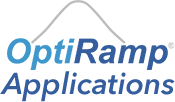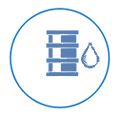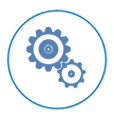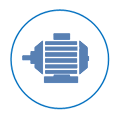
Asset Wide Real-Time Process Models, Artificial Intelligence,
Simulation Backed Optimization, Predictive Analytics, Optimal Scheduling
Web
Visualization
OptiRamp Web Applications combine to create a real-time data infrastructure and collaboration environment that centralize processes and enterprise knowledge and experience.

Web Analytics
The Web Analytics Module is a combination of Web HMI and analytics tool that can be fully customized in the OptiRamp Web Designer via a standard web browser.

Notifications
The OptiRamp Notification Server displays a variety of notification messages of different severity, categories, and sources via a web client for all data sources.

Reports
The OptiRamp Report Viewer uses a web client to display reports, including diagnostics, shift optimization, scheduling, and custom reports from multiple applications.

Knowledge Base
The OptiRamp Knowledge Base provides conceptual and technical information about the OptiRamp software as well as user manuals and standard solutions using the OptiRamp software.

Web Designer
The OptiRamp Web Designer is a powerful, intuitive, and effective user interface where a graphic displays of the process is created.
Data
Processing
OptiRamp Data Processing modules focus on technological processes real-time predictive analytics to optimize operations and provide the highest value to customers, including reducing costs and increasing stability and reliability.

Optimization
The real-time model based Optimization Module suggests the optimal operating mode based on the given optimization criteria.

Scheduling
The OptiRamp Scheduling predicts future moves and builds a process operating forecast to maintain the operation in accordance with the defined targets

Analytics
The Analytics Module tracks equipment performance and can reduce maintenance cost and ensure longer equipment life.

Tag Advanced Function
OptiRamp Tag Advanced Functions (TAF) creates advanced calculations that transform tags & data into actionable key performance indicators (KPIs) and key operating parameters (KOPs)
Real-Time
Simulation
The dynamic simulation virtual process represents functional dependencies between highly interconnected (both linearly and nonlinearly) multiple inputs, multiple outputs and multiple losses and used to find, recommend, and deploy improvements of the process.

Process Model
Detailed models of all necessary process equipment and components (pipelines, well loads, engines, etc.) are constructed based on OEM specifications and process design data to represent the complete technological process

Auto Tunning
The virtual process adjusts the model by aligning simulated variable values to real-time process values. Auto-tuning compares model predicted data with real-time data and automatically updates the models coefficients to become highly accurate, reducing the level of errors in the final simulation results

Electrical Model
Electrical Model consists of power transmission componenets, power producing components, load componets, and the nodes of which components can be connected. The transmission network is made up of three-phase transmission lines.
Data
Foundation
OptiRamp Data Foundation is a central information hub for parallel access of a large number of applications to different data sources and is responsible for communication from multiple data sources to one central decision support center.

Virtual Tag Service
The OptiRamp Virtual Tag Server collects data from multiple sources - including Microsoft Excel, CSV files, Rational SCADA, Aspen HYSYS, Oracle databases, Microsoft SQL server, and OSI PI - using standard OPC, ODBC, and Modbus protocols

Real-Time DB
VTS DB service uses data collection and archiving techniques that can handle massive amounts of information at very high access rates for multiple years

